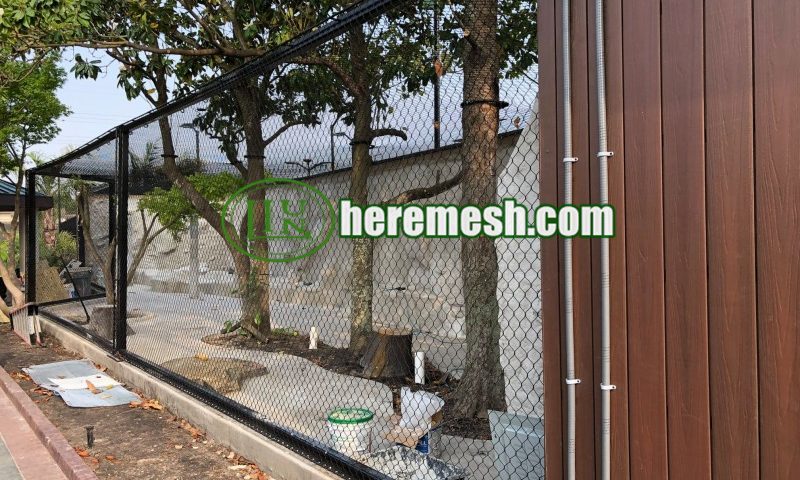Protecting Your Animals with Animal Enclosure Fencing

Order Delivery to Switzerland: Terrace Anti-fall Mesh
09/02/2025
Phantom Mesh Aviary: Redefining Aviary Protection
09/16/2025Stainless Steel Cable Mesh: The Ideal Choice for Animal Enclosure Fencing
In the construction of zoos, animal enclosure fencing plays a crucial role. They serve not only as key facilities for ensuring animal safety and preventing escapes, but also as vital barriers for protecting visitor safety and maintaining order within the zoo. With the continuous advancement of material technology, stainless steel cable mesh has gradually become the preferred material for zoo animal enclosures due to its numerous outstanding properties. Compared to traditional enclosure types, it demonstrates irreplaceable advantages.
Excellent corrosion resistance for zoo environments
Zoo environments are complex and diverse, with significant variations in humidity and temperature across different areas. For instance, aquatic animal exhibits maintain high humidity year-round. Bird exhibits may suffer corrosion from avian waste. Traditional wire mesh fencing is highly susceptible to rusting in such conditions. Typically made of low-carbon steel, these fences receive only basic galvanized surface treatment. Over time, the galvanized coating wears away and peels off, exposing the underlying iron wires to air and causing rust formation. Rust not only compromises the aesthetic appeal of the fencing but also drastically reduces the strength of the wires. In severe cases, the wires may break, creating gaps in the fence. This poses significant risks of animal escape and visitor safety hazards.
Stainless steel animal enclosure fencing completely overcomes the corrosion susceptibility of traditional fencing. Its exceptional corrosion resistance stems primarily from its unique material composition. Stainless steel cable mesh is typically woven from stainless steel wires such as 304 or 316 grades. These stainless steel materials possess exceptional stability, effectively preventing oxygen, moisture, and other corrosive substances from reacting with the metal matrix within the stainless steel. Even when subjected to external impacts or friction, they maintain their corrosion resistance.
In aquatic animal exhibits, stainless steel enclosure fencing remains stable even when submerged long-term or exposed to high humidity. In bird exhibits, bird droppings contain acidic substances that severely corrode traditional fencing. Stainless steel cable mesh resists such acidic erosion, significantly extending the enclosure’s lifespan. Furthermore, in coastal zoos where airborne salt content is elevated, the corrosive effects on metals are particularly severe. Conventional fencing typically exhibits shortened lifespans in such environments, prone to corrosion and rusting. Stainless steel cable mesh, especially those crafted from 316-grade stainless steel wire, delivers long-term stable performance in coastal high-salt-fog conditions.

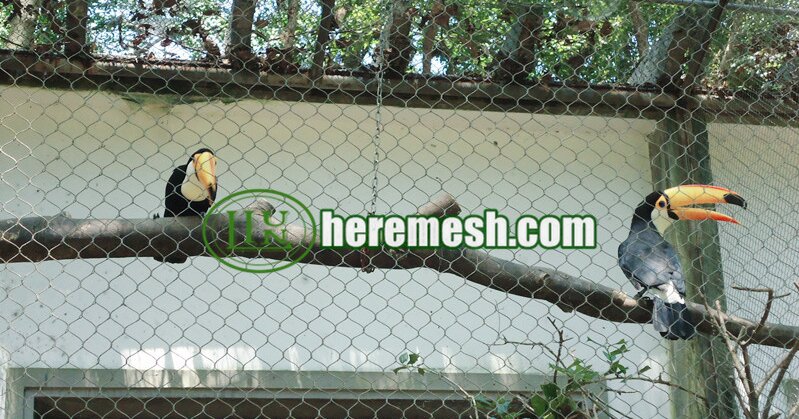
High strength and toughness for safety
The physical size, strength, and behavioral habits of different animals in zoos vary greatly. Large predators such as lions, tigers, and leopards possess tremendous explosive power and biting force. Large herbivores like elephants, rhinos, and giraffes are massive in size, weighing up to several tons. During their movements, these large herbivores may exert significant impact forces on enclosure fencing. Animals with climbing abilities, such as monkeys, apes, and squirrels, constantly scale and tug at the fencing. Therefore, animal enclosure fencing must possess sufficient strength and excellent resilience to withstand the diverse external forces exerted by different animals. Safe animal enclosures ensure animals cannot breach the fencing to escape while also protecting visitors from animal harm.
Stainless steel animal enclosure fencing, however, combines exceptional strength with excellent flexibility, making it highly adaptable to the complex demands of zoos. Stainless steel wire inherently possesses high tensile strength. When woven into mesh using specialized techniques, the overall structure becomes more stable, distributing external forces evenly across the entire net. This enhances the mesh’s overall load-bearing capacity. High-quality stainless steel mesh can withstand violent impacts and bites from large predators without breaking or severe deformation.
Additionally, stainless steel cable mesh exhibits excellent resilience. When subjected to external forces, it undergoes elastic deformation to absorb part of the impact energy before returning to its original shape. This resilience allows the netting to act as a buffer during collisions with large animals, reducing injury to the animals themselves while preventing damage to the enclosure.
Furthermore, the high strength and excellent toughness of stainless steel cable mesh are evident in its anti-climb properties. When animals attempt to climb the fence, they exert pulling forces on the netting. Traditional fencing may fail under such stresses. Stainless steel rope netting, however, can withstand substantial pulling forces, making it difficult for animals to damage. This effectively prevents animals from escaping by climbing over the fence.
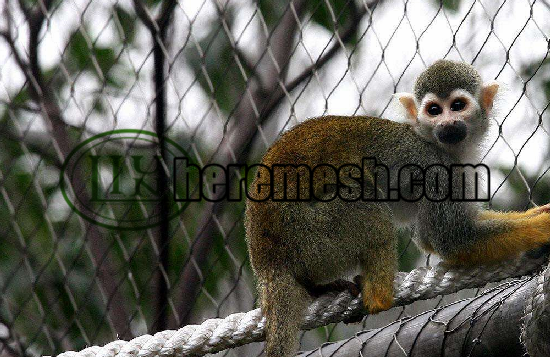
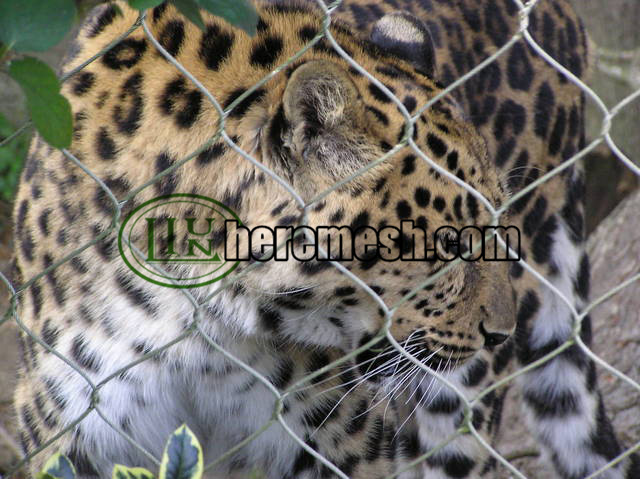
Unobstructed Views, Enhanced Well-being
Zoos are not only habitats for animals but also vital venues for people to observe and learn about them. Therefore, animal enclosure fencing must ensure safety while also providing excellent light transmission and visual transparency. This allows visitors to clearly view animal activities, enhancing their viewing experience. Simultaneously, good light transmission ensures animals receive ample sunlight, creating a healthier living environment for them.
Traditional enclosure fencing exhibits significant shortcomings in light transmission and visual clarity. Concrete and brick wall enclosures are completely opaque. Visitors can only observe animals through designated viewing windows, resulting in limited observation areas and a subpar viewing experience. Moreover, such enclosures block sunlight from entering the enclosure, adversely affecting animal health. Conventional wire mesh features thicker strands, which impede visitors’ viewing quality.
Stainless steel rope netting offers exceptional light transmission and visual transparency, providing visitors with an optimal viewing experience. Constructed from braided steel cables, its mesh wires feature a fine diameter typically ranging from 1.2 to 3.2 millimeters. The mesh size of stainless steel rope netting can be customized to meet specific requirements. This structural design allows clear observation of animal activities within the enclosure, significantly enhancing the visitor experience. Simultaneously, the unobstructed visibility enables animals to perceive the environment outside the enclosure, reducing feelings of confinement and anxiety.
Zero pollution, true to the zoo’s green vision
With the continuous rise in environmental awareness, zoo construction increasingly emphasizes ecological and environmental principles. More and more zoos strive to create comfortable and healthy living environments for animals. Therefore, as a crucial facility within zoos, the environmental performance of animal enclosure fencing has become a key factor to consider when selecting fencing materials.
Traditional fencing materials may cause environmental pollution during production, use, and disposal. Stainless steel cable mesh, however, is an eco-friendly, pollution-free alternative. Its primary raw material is stainless steel wire, whose manufacturing process is relatively clean and produces minimal pollutants. Furthermore, stainless steel cable mesh is recyclable. When the netting reaches the end of its service life, it can be recycled without harming the environment, thereby conserving resources.
During use, stainless steel rope mesh does not release harmful substances like traditional fencing materials. Its smooth surface poses no health risks to animals. Furthermore, stainless steel rope mesh exhibits excellent compatibility with surrounding ecosystems. It does not disrupt the ecological landscape of zoos and integrates seamlessly into the overall environment.
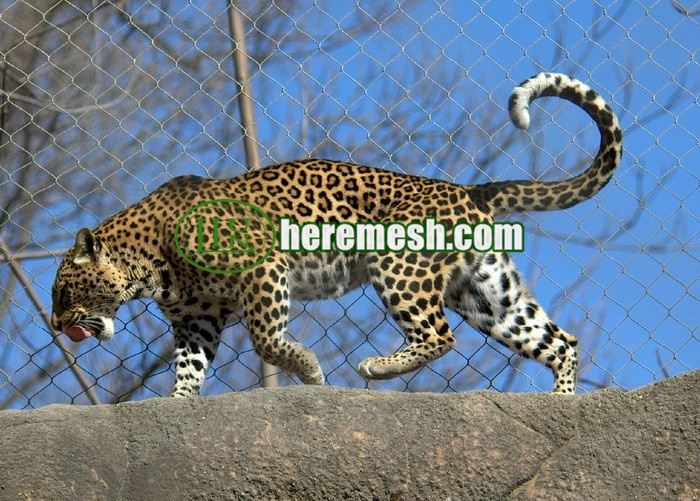
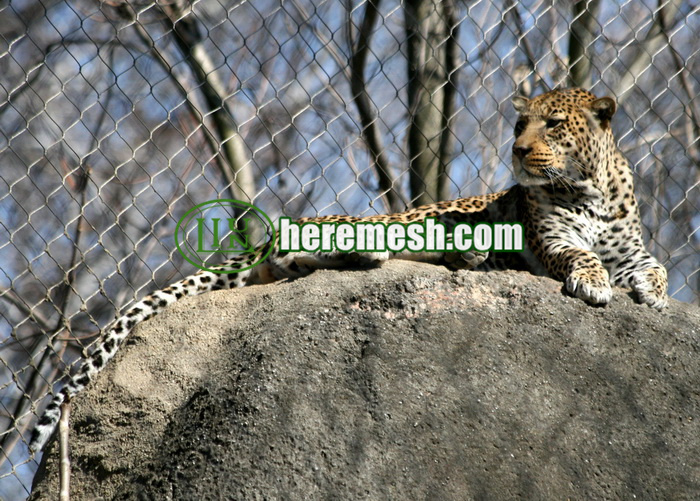
Durable and cost-effective for zoo operations
The overall aesthetic appeal of the zoo environment is also crucial. Selecting fencing materials that are visually appealing, durable, and low-maintenance can effectively reduce the zoo’s operational costs.
Stainless steel rope mesh combines beauty with durability, enhancing the zoo’s overall image. With a smooth surface and bright finish, stainless steel rope mesh possesses a modern, metallic aesthetic that seamlessly integrates with diverse architectural styles and landscape designs, creating a clean, elegant, and sophisticated environment. Its unique weave structure features uniformly spaced, orderly mesh openings and fluid lines. Viewed from any angle, stainless steel animal enclosure fencing delivers excellent visual appeal, adding a distinctive aesthetic dimension to the zoo.
Regarding durability, stainless steel rope netting boasts a lifespan exceeding 20 years, far surpassing traditional fencing materials. It requires minimal maintenance during use, needing only periodic simple cleaning, resulting in extremely low upkeep costs. While the initial purchase cost may be relatively higher compared to traditional fencing, the long-term operational savings from its extended lifespan and low maintenance expenses enable significant financial savings for zoos.
Flexible customization for diverse exhibits
Different animal exhibits within zoos possess distinct characteristics and requirements. Therefore, animal enclosure fencing must offer flexible customization to meet the specific needs of each exhibit. Stainless steel rope netting can be tailored to create fencing products that precisely match the requirements of various animal exhibits. Mesh size can be adjusted according to the body size of different animals, preventing small animals from escaping while allowing large animals to move freely.
In terms of height and width, stainless steel rope netting can be customized to the actual dimensions of each exhibit area. Additionally, it adapts to diverse geographical environments, conforming seamlessly to terrain to ensure the integrity and safety of the enclosure.
Furthermore, stainless steel rope netting can be color-customized to align with the zoo’s overall design aesthetic and cultural identity. Through specialized surface treatment processes, it can be finished in black. This natural-looking hue enhances harmony with the zoo’s surroundings.
Conclusion
In summary, stainless steel cable mesh as an innovative fencing material, has demonstrated exceptional properties in animal enclosure fencing. These characteristics enable stainless steel rope netting to effectively meet protective requirements, creating a safe, comfortable, and natural living environment for animals. Simultaneously, it provides visitors with an enhanced viewing experience, elevating the ecological standards of zoological facilities. In the future market for zoo animal cages, stainless steel animal enclosure fencing will become the preferred material for zoo construction and renovation projects.


